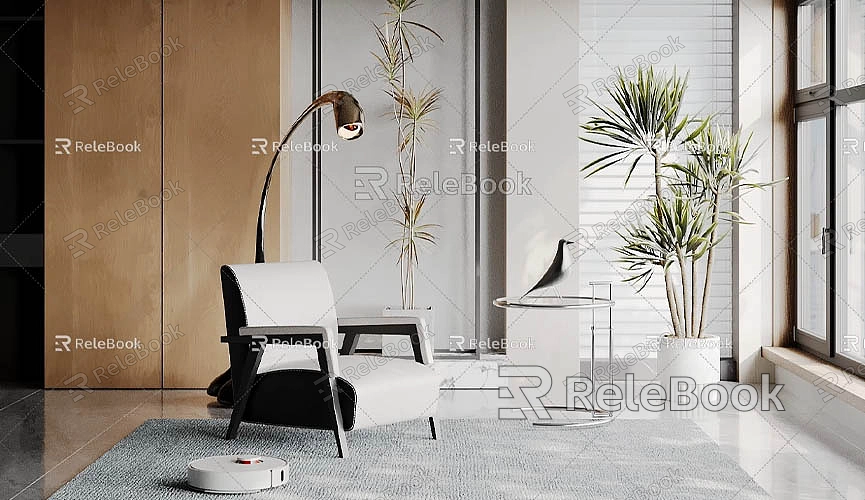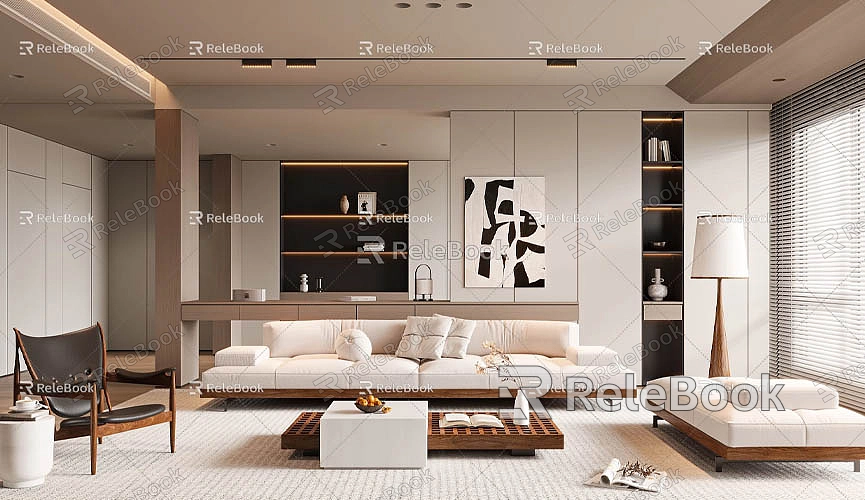How to Share SketchUp Models on Facebook
SketchUp, as a popular 3D modeling tool, helps designers create stunning works in fields such as architecture, interior design, urban planning, and more. Additionally, it provides a vast platform for designers to showcase their creativity. Facebook, as the world’s largest social media platform, has become the go-to place for many creators to share and promote their work. For designers who use SketchUp for modeling, Facebook not only serves as a window to showcase their work but also as a social channel for engaging with peers and receiving client feedback.
In this article, we will explore how to share SketchUp models on Facebook, helping you increase exposure, build influence, and attract potential clients’ attention. We will cover various effective sharing methods, how to optimize the presentation of your models, and some tips for boosting interaction and engagement, making your work more appealing on Facebook.
Why Choose Facebook as a Sharing Platform
Before diving into specific sharing methods, it’s important to understand why Facebook is an ideal platform for sharing SketchUp models.
1. Vast User Base and Global Reach
As the world’s largest and most active social media platform, Facebook boasts over 2 billion monthly active users. This massive user base means that your work can be showcased to a global audience, with potential clients and collaborators able to discover your creations easily. For designers, this is an invaluable opportunity for exposure.
Whether you're aiming for industry recognition or looking for potential clients, Facebook’s large community offers limitless possibilities. Sharing your SketchUp models on Facebook not only boosts your work's visibility but also attracts the attention of peers, design enthusiasts, and even clients worldwide.
2. Strong Interactivity and Viral Potential
One of the key features of Facebook is its strong interactivity. Viewers can engage with posts through likes, comments, and shares, which helps spread your work to an even wider audience. This viral effect, especially when your work resonates with viewers, can quickly increase exposure.
For instance, if a design piece strikes a chord within a designer community, it might be shared across various design-related groups, pages, and even personal profiles, vastly expanding its reach. By sharing SketchUp models on Facebook, you can engage directly with your audience and amplify your model’s visibility through shares by your friends and followers.

3. Support for Multimedia Content
Facebook supports a variety of content formats, including images, text, videos, and even 3D models. When showcasing SketchUp models, you can upload high-quality images, model screenshots, and even interactive videos, helping potential clients better understand your work. Compared to static images, videos and interactive models can more comprehensively display the design’s details and features, enhancing the designer’s presentation.
By utilizing these multimedia formats, designers not only leave a lasting impression but also increase engagement, making the work more visually appealing and encouraging further discussion and feedback.
How to Share SketchUp Models on Facebook?
Now that we understand why Facebook is a great platform for sharing SketchUp models, let’s look at how to effectively share your work on Facebook. These methods will help you maximize exposure and engage more deeply with your audience.
1. Use High-Quality Screenshots to Showcase Your Model
One of the most common ways to share SketchUp models is by taking screenshots. After completing a model, you can adjust the view to select the most expressive angle and capture a high-quality screenshot. This provides a very direct and intuitive way to showcase the model's appearance, layout, details, and more.
To ensure your screenshots are of the highest quality, you should consider a few important factors. First, choose the best angle and lighting. If you're using SketchUp’s built-in scene feature, you can set different views and scenes to capture various perspectives of the model. Secondly, adjusting the render quality is crucial. A higher render quality will make your screenshots sharper and more visually impressive.
Once you've captured the screenshots, you can upload them as image files to Facebook. In the post, you can add a brief description, such as explaining the design concept, inspiration, materials used, or techniques involved. This not only helps viewers better understand the context of your work but also makes your model more engaging.
2. Share SketchUp Model Files or Download Links
For designers who want others to use their creations, directly sharing SketchUp model files is an effective method. By providing a download link, other designers can easily download and work with your models. This not only increases your work’s exposure but also encourages other designers to interact with you by providing suggestions and feedback.
Uploading SketchUp model files is simple. You can upload the model file (usually a .skp file) to a cloud storage service like Google Drive, Dropbox, or OneDrive, then generate a shareable link. By posting the link on Facebook, others can download the file and use your model with just a click.
If you have a personal website or portfolio, consider hosting your model files there and sharing the links on Facebook. This method not only boosts exposure but also helps establish a more professional image for your personal brand.
3. Embed the Model Using 3D Model Showcase Platforms
Instead of using static images or download links, embedding your SketchUp model using a 3D model showcase platform is a more interactive approach. Platforms like Sketchfab and Modelplace allow designers to upload their 3D models and generate an embed code. By embedding the 3D model on Facebook, viewers can directly rotate, zoom, and explore various design details right on the platform.
The advantage of this method is that Facebook users can interact with the model in real-time, viewing it from every angle and zooming in on specific details, without needing to download any files or open external links. This greatly enhances user engagement and experience, making it an ideal way to showcase 3D models.
After uploading to Sketchfab or a similar platform, designers can copy the embed code and paste it into a Facebook post. This way, users can interact with the model directly on Facebook and gain a more immersive experience.

4. Showcase SketchUp Models via Video
Video is a powerful tool for showcasing your SketchUp models in great detail. Through video, designers can demonstrate the intricate features of the model, the design process, or even add voice commentary to enhance understanding and immersion. Compared to static images or links, videos provide a more dynamic and comprehensive way to present the work.
You can record a process video to show how the model was built, or a final product showcase video to highlight various perspectives and features. Many designers add animation effects to make the video more engaging, showcasing the interactivity and functionality of the model. These details can make your work more captivating.
Video production can be done using screen recording software (such as OBS Studio or Camtasia) or professional rendering tools. After recording, you can upload the video to platforms like YouTube or Vimeo and share the link on Facebook. This not only provides viewers with a better understanding of your design but also increases the video’s views, further expanding your reach.
Tips to Enhance the Effectiveness of Your Facebook Post
In addition to choosing the right sharing method, there are several tips and optimizations you can use to make your post stand out and attract more attention and engagement.
1. Use High-Quality Content
Whether it’s images, videos, or 3D models, the quality of your content is crucial. High-quality visuals attract more attention and make your work appear more professional. Ensure that screenshots are clear and bright, videos are smooth and engaging, and the model quality is top-notch. These details will significantly improve the presentation of your work.
2. Keep Text Descriptions Brief and Informative
When sharing SketchUp models on Facebook, don’t underestimate the importance of a concise and informative text description. A clear description helps viewers understand the design concept, background, and features of the model. This can spark their interest and lead to more engagement.
3. Use Relevant Tags and Keywords
Including relevant hashtags (e.g., #SketchUpDesign, #ArchitectureModel, #InteriorDesign) in your Facebook post will increase its visibility in search results and help your work be seen by more potential viewers. Tags make it easier for users to find models related to your design style, boosting your exposure.
4. Post Regularly and Engage with Your Audience
Posting new work or updates to existing designs on a regular basis will keep your audience engaged. Additionally, actively responding to comments and feedback helps increase your work’s visibility and shows your dedication to detail. Engaging with your audience builds a stronger connection and fosters a community around your designs.
Sharing SketchUp models on Facebook is a powerful way for designers to increase their visibility, attract potential clients, and engage with a wider audience. By choosing the right sharing methods, optimizing your model presentation, and actively interacting with your followers, you can better showcase your creativity and design concepts, while also increasing your influence in the industry.
If you need high-quality 3D textures and HDRI for creating models and virtual scenes, you can download them for free from https://textures.relebook.com/. If you're looking for beautiful 3D models, you can download them from https://3dmodels.relebook.com/, where you'll find a wide range of high-quality resources to enhance your design work.

